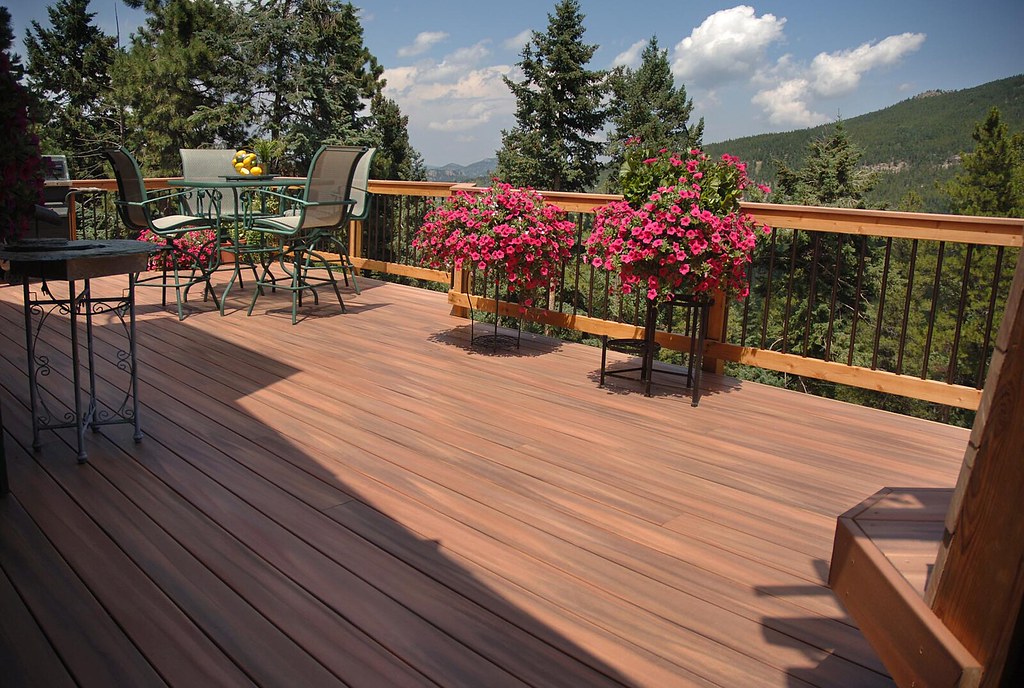
New Zealand’s diverse climate poses unique challenges for outdoor structures like decks. From the salty sea air of coastal regions to the heavy rainfall and strong winds of temperate zones, NZ’s weather can take a toll on traditional decking materials. However, composite decking has emerged as a resilient solution that thrives in NZ’s climate.
In this article, we’ll explore how composite decking withstands the elements and remains a durable and low-maintenance choice for outdoor living spaces across New Zealand.
Contents
Understanding NZ’s Climate
Before delving into how composite decking fares in NZ’s climate, it’s essential to understand the country’s weather patterns. New Zealand experiences a range of climatic conditions, influenced by its diverse geography and proximity to the Southern Ocean.
Coastal areas are characterized by mild temperatures, high humidity, and salty sea air, while inland regions often experience more extreme temperature fluctuations and seasonal weather variations. Additionally, NZ is prone to heavy rainfall, especially in the west coast regions, and strong winds, particularly in the southern parts of the country.
Composite Decking: A Resilient Solution
Resistance to Moisture
One of the primary benefits of Composite Decking NZ climate is its resistance to moisture. Unlike traditional timber decking, which is prone to rot, mold, and decay when exposed to moisture, composite decking is engineered to withstand prolonged exposure to rain, humidity, and damp conditions.
The combination of wood fibers and recycled plastics in composite decking creates a moisture-resistant barrier that prevents water from penetrating the boards, ensuring long-term durability and structural integrity.
Protection Against UV Rays
NZ’s strong sunlight and UV radiation can cause fading, discoloration, and degradation of outdoor materials over time. However, composite decking is formulated with UV inhibitors and protective coatings that shield the boards from the damaging effects of the sun.
This UV resistance helps preserve the color and appearance of composite decking, ensuring that it maintains its aesthetic appeal even after years of exposure to NZ’s intense sunlight.
Durability in Coastal Environments
Coastal areas in NZ are particularly challenging for outdoor structures due to the corrosive effects of saltwater and sea air. Traditional timber decking is susceptible to warping, splintering, and decay when exposed to salty sea air. In contrast, composite decking is highly resistant to saltwater corrosion, making it an ideal choice for coastal homes and properties. Its non-porous surface repels moisture and prevents saltwater from penetrating the boards, ensuring that composite decking remains strong and durable even in harsh coastal environments.
Low Maintenance in All Climates
Minimal Upkeep
One of the key advantages of composite decking in NZ’s climate is its low maintenance requirements. Unlike timber decking, which requires regular staining, sealing, and painting to protect against the elements, composite decking only requires occasional cleaning to maintain its appearance and performance. A simple wash with soap and water is usually sufficient to remove dirt, debris, and surface stains from composite decking, saving homeowners time, effort, and money on maintenance tasks.
Resilience to Weathering
Composite decking is designed to withstand the rigors of outdoor environments, including NZ’s variable climate. Its durable construction and protective coatings help resist fading, staining, and weathering, ensuring that composite decking maintains its beauty and functionality year after year.
Whether it’s enduring heavy rainfall, strong winds, or intense sunlight, composite decking remains resilient and reliable in any climate, providing homeowners with peace of mind and long-term value for their investment.
Environmental Sustainability
Eco-Friendly Materials
Many composite decking brands use recycled materials in their manufacturing process, making them a more sustainable choice compared to traditional timber decking. By repurposing waste materials such as plastic bags, wood scraps, and sawdust, composite decking helps reduce the demand for virgin resources and minimizes environmental impact.
Additionally, composite decking is often recyclable at the end of its lifespan, further reducing its environmental footprint and promoting circularity in the product lifecycle.
Sustainable Manufacturing Practices
Composite decking manufacturers are increasingly adopting sustainable manufacturing practices to minimize waste, energy consumption, and emissions. By investing in renewable energy sources, eco-friendly production methods, and responsible sourcing of materials, composite decking brands are leading the way in sustainability and environmental stewardship.
This commitment to eco-friendly practices ensures that composite decking remains a sustainable choice for NZ homes, aligning with the country’s goals for environmental conservation and climate action.
Conclusion
Composite decking is a resilient and low-maintenance solution that thrives in New Zealand’s diverse climate. Its resistance to moisture, UV rays, and weathering makes it an ideal choice for outdoor living spaces across the country, from coastal properties to inland homes.
With minimal upkeep and long-term durability, composite decking provides homeowners with peace of mind and confidence that their outdoor spaces will remain beautiful and functional for years to come. As NZ continues to weather the elements, composite decking emerges as a durable and sustainable choice for enhancing outdoor living and enjoying the beauty of nature in all its forms.